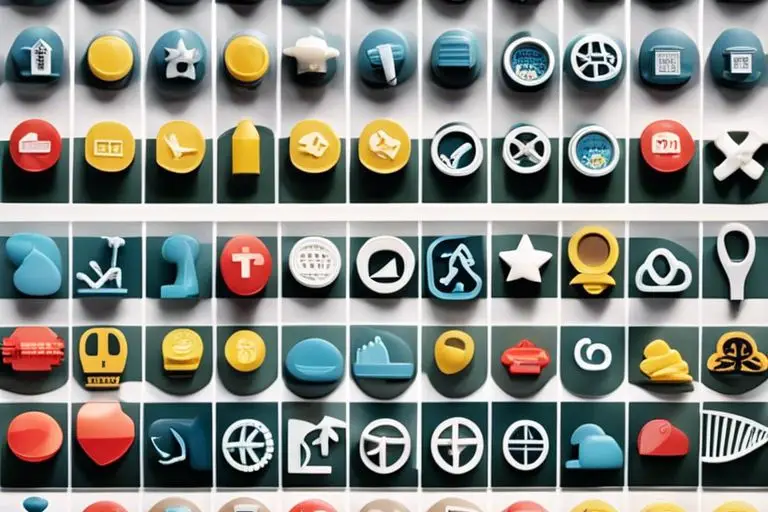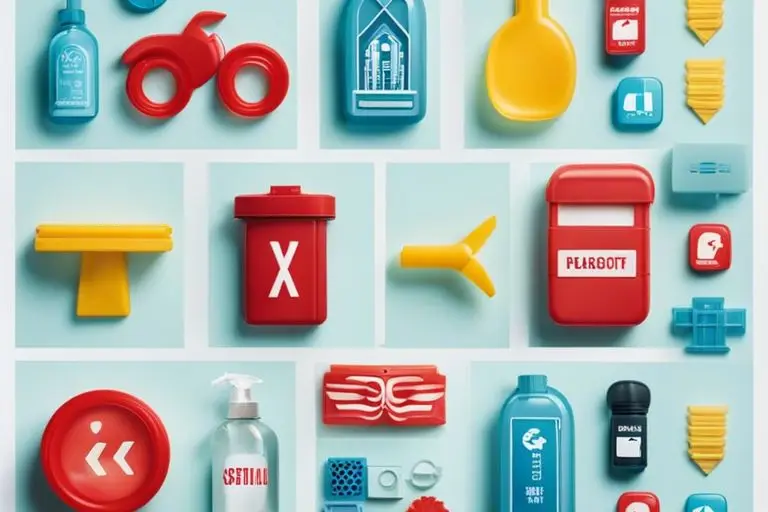It may come as a surprise, but there are seven distinct types of plastic that are commonly used in our everyday lives. Each type comes with its own unique properties and applications, ranging from harmful single-use plastics to eco-friendly alternatives. Understanding these different types of plastics is crucial for making more sustainable choices and reducing our environmental impact. Let's examine into the world of plastics and explore the importance of proper plastic disposal and recycling.

Key Takeaways:
- Seven Types of Plastic: There are seven different types of plastics classified by resin identification codes (RIC).
- Varying Properties: Each type of plastic has different properties, such as recyclability, heat resistance, and chemical resistance.
- Environmental Impact: Understanding these types of plastics helps in making informed decisions regarding recycling, reuse, and reducing environmental impact.

The Seven Types of Plastic
Little did you know that there are seven different types of plastic that are commonly used in everyday products. Each type has its unique properties and recycling capabilities, making it necessary to understand the differences between them.
| Type 1: PET or PETE (Polyethylene Terephthalate) | Type 2: HDPE (High-Density Polyethylene) |
| Type 3: PVC (Polyvinyl Chloride) | Type 4: LDPE (Low-Density Polyethylene) |
| Type 5: PP (Polypropylene) | Type 6: PS (Polystyrene) |
| Type 7: Other (BPA, Polycarbonate, LEXAN) |
Thou it is crucial to be aware of the different types of plastic to make informed decisions when it comes to usage and disposal.
Type 1: PET or PETE (Polyethylene Terephthalate)
On a closer look, Type 1 plastic, PET or PETE, is commonly used in beverage bottles and food packaging. It is lightweight, durable, and has good clarity, making it a popular choice for single-use items. However, it is important to note that repeated use can lead to the release of harmful chemicals into the contents.
Type 2: HDPE (High-Density Polyethylene)
An necessary plastic in our daily lives, HDPE is widely used in milk jugs, detergent bottles, and plastic bags. Its strong and impact-resistant properties make it ideal for storing liquids and chemicals. HDPE is also considered a safer option for food and beverage containers compared to other types of plastic.
Seven
Pertaining to plastic, understanding the seven different types can help us make better choices for the environment and our health. Knowing which plastics are recyclable and which are not can have a significant impact on reducing waste and pollution. Stay informed and choose wisely when it comes to plastic use in your daily life.
More Plastics and Their Uses
You may have heard that there are different types of plastics, but did you know how many there are? If you're curious to dive deeper into the world of plastics, click here to learn more.
Type 3: PVC (Polyvinyl Chloride)
For Type 3 plastics, Polyvinyl Chloride (PVC) is commonly used in construction materials like pipes, window frames, and siding. It is also found in medical tubing and blood bags due to its durability and resistance to chemicals. However, PVC can release harmful toxins when burned, so proper disposal is crucial.
Type 4: LDPE (Low-Density Polyethylene)
The versatility of Type 4 plastics, particularly Low-Density Polyethylene (LDPE), is remarkable. LDPE is used in various everyday products such as plastic bags, squeeze bottles, and shrink wraps. Its flexibility and moisture barrier properties make it an ideal choice for packaging. LDPE is considered safe for food storage and is recyclable, but it is not biodegradable.
Polyvinyl acetate, commonly known as PVA, is a type of LDPE that is often used in adhesives, paints, and coatings. While LDPE has numerous practical applications, it is crucial to recycle and dispose of it responsibly to minimize environmental impact.
Navigating the Remaining Types
All plastics are not created equal. Understanding the differences between the various types is imperative for responsible recycling and disposal practices. Here is the breakdown of the remaining plastic types:
| Type 4: LDPE (Low-Density Polyethylene) | Type 7: Other |
| Type 3: PVC (Polyvinyl Chloride) | Type 2: HDPE (High-Density Polyethylene) |
| Type 5: PP (Polypropylene) | Type 1: PET (Polyethylene Terephthalate) |
| Type 6: PS (Polystyrene) | |
| Type 6: PS (Polystyrene) |
Type 5: PP (Polypropylene)
To properly identify PP (Polypropylene) plastic, look for the number 5 inside the recycling symbol. This type of plastic is commonly used in yogurt containers, medicine bottles, and kitchenware. PP is known for its high melting point, making it suitable for storing hot liquids.
Type 6: PS (Polystyrene)
An imperative thing to know about PS (Polystyrene) is that it is commonly found in foam packaging, disposable cups, and take-out containers. While convenient, PS is not easily recyclable and can release toxic chemicals when exposed to heat.
Assume that properly managing the disposal of these plastic types is crucial in limiting environmental pollution and protecting human health.
Specialty Plastics and Bioplastics
Unlike traditional plastics, specialty plastics and bioplastics offer more sustainable alternatives that are gaining popularity in various industries. If you want to learn more about the different types of plastic, check out this informative article on 7 Types of Plastic that You Need to Know About.
Type 7: Other (Various Plastics Including Bioplastics)
Other plastics categorized under Type 7 include various blends and types that do not fit into the other six categories. This group also includes bioplastics, which are derived from renewable resources like corn starch and sugarcane. Bioplastics are biodegradable and have a lower environmental impact compared to traditional plastics.
Innovations and Environmental Considerations
Bioplastics are at the forefront of innovation in the plastics industry. Researchers are constantly working on developing bioplastics with enhanced properties and durability to replace traditional plastics. These sustainable alternatives not only help reduce our reliance on fossil fuels but also offer a solution to the mounting plastic waste crisis. By choosing bioplastics over conventional plastics, we can contribute to a healthier planet for future generations.
Final Words
Presently, we have explored the seven different types of plastic and their unique properties. Understanding the distinctions between these types can lead to more informed choices when it comes to recycling and proper disposal. By being aware of the impact each type of plastic has on the environment, individuals can make a more sustainable and eco-friendly decision when using plastic products. It is crucial to remember that plastic pollution is a significant issue that affects our oceans, wildlife, and ecosystems. Therefore, being knowledgeable about the different types of plastic is a crucial step towards reducing our plastic footprint and creating a cleaner, healthier planet for future generations.
FAQ
Q: What are the 7 different types of plastic?
A: The 7 different types of plastic are identified by the resin identification code (RIC) numbers, which range from 1 to 7. These include:
1. Polyethylene Terephthalate (PET or PETE)
2. High-Density Polyethylene (HDPE)
3. Polyvinyl Chloride (PVC)
4. Low-Density Polyethylene (LDPE)
5. Polypropylene (PP)
6. Polystyrene (PS)
7. Other plastics (often polycarbonate or ABS).
Q: How can I identify the type of plastic used in a product?
A: To identify the type of plastic used in a product, look for the resin identification code (RIC) symbol usually found on the bottom of the product. The symbol consists of a triangle of arrows surrounding a number from 1 to 7, which corresponds to the specific type of plastic used. Familiarize yourself with these codes to make informed decisions about recycling and proper disposal.
Q: Why is it important to know the different types of plastic?
A: Understanding the different types of plastic is crucial for proper waste management and recycling. Each type of plastic has unique properties that affect its recyclability and environmental impact. By knowing the type of plastic used in a product, you can make informed choices about recycling practices, reduce plastic pollution, and contribute to a more sustainable future.
